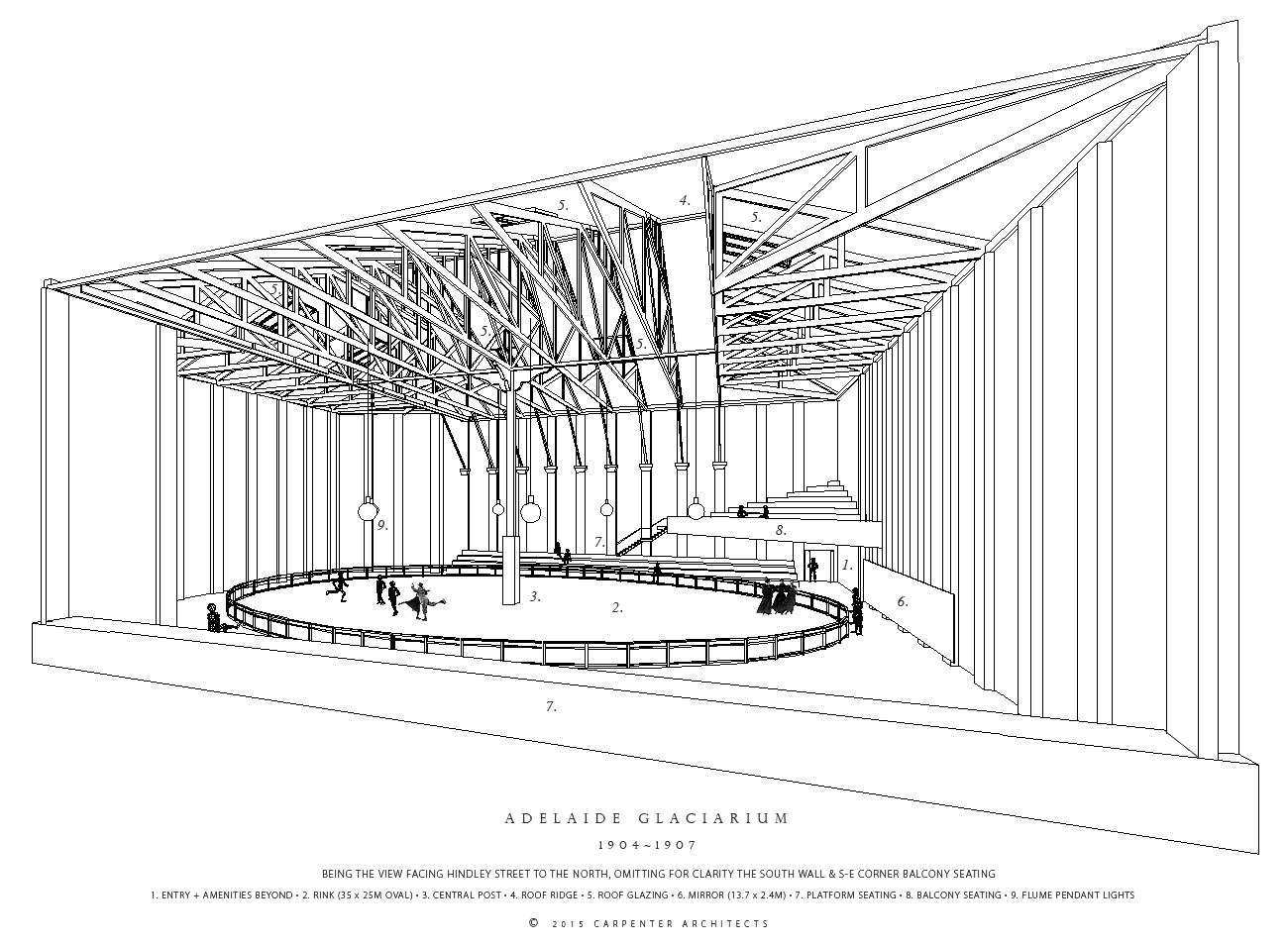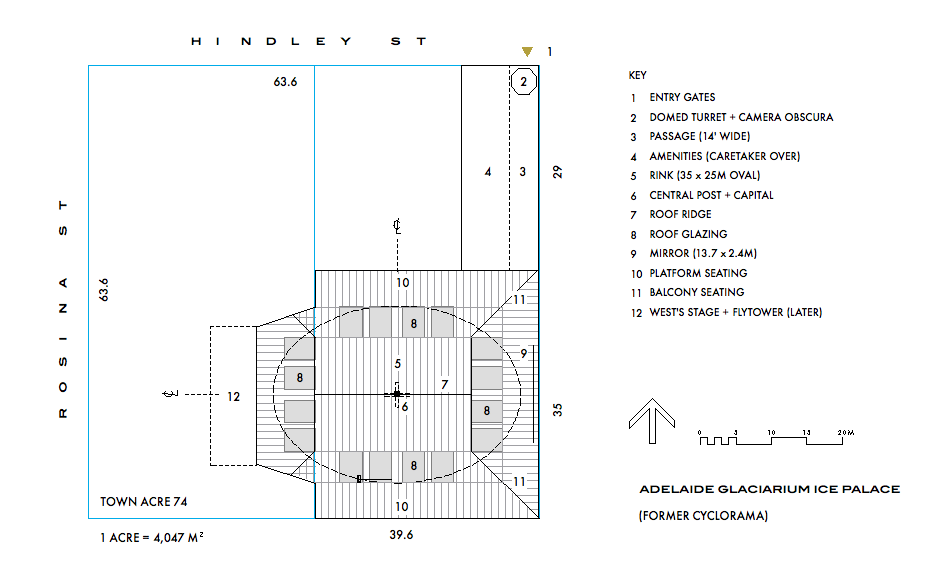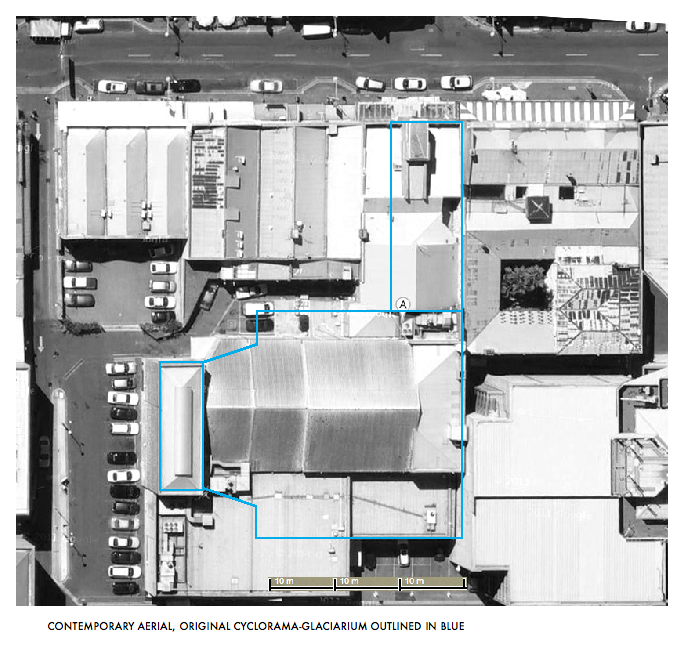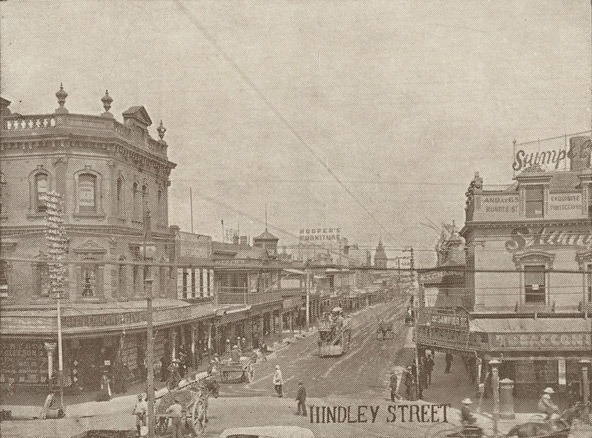CAREER SUMMARY
Birth
1862
Rochester Kent England
Death
1947
Marrickville Sydney Australia
Ice rinks
Adelaide 1904, Melbourne 1906
Refrigeration Engineer MSE (London) AMIE (Australia)
Australia's first ice rink developer and manager
Founder of ice sports in Australia
Namesake, AIHL minor premiership trophy
INTERSTATE SPORT COMPETITIONS — rugby, Australian Rules, and later cricket and tennis — were important to a nation without a national competition for most of the 20th century. But that does not explain why in 1909 the obscure game of ice hockey followed on the heels of the first interstate sport competitions in Australia, led by the Melbourne refrigeration engineer, H Newman Reid.
The pioneer of national ice sports, and founder of ice hockey in Australia, Reid led the entrepreneurial syndicate that set up Australia's first ice rink in Adelaide in 1904. World-class ice arenas, built with venture capital and dimensioned for international competition, opened in Melbourne in 1906 and Sydney in 1907. Organised figure skating, ice racing, curling and ice hockey soon followed and, in the 1980s, the sliding sports.
The first and only ice rinks in Australia for 30 years, the Melbourne rink cradled the birth of interstate ice hockey competition, and the national organising bodies for both ice hockey in 1908 and skating in 1911. The children of Henry and Lucy — Andy, Hal, Leslie and Mirey — each played founding roles, and all went on to become national ice sports champions.
Born in 1862 at Rochester near London, the son of Rev John Lambert Reid MA and Mary Ann Mireylees of Edinburgh, Henry moved to Melbourne at 6 where his family established the Buckley & Nunn department store and co-founded Bates Smart Architects. He became an associate of the Institute of Engineers Australia soon after James Harrison in Geelong pioneered the world's first commercial refrigeration technology.
Appointed by the Victorian government to report on freezing works in 1879, Reid worked as the advisory director and later secretary to the Portland Western Districts of Victoria Freezing Company. From 1902 he managed the Adelaide ice company owned by Sydney engineer, Charles Macdonald, who supplied 90 percent of the freezing machinery in Australasia by the turn of the century, through his rights to the Hercules Refrigerating Machine patents from America.
Ice rinks in London, Pittsburg and Washington at that time cost between £30,000 and £42,500 (about $4 to $6 million), but Reid's plan was to avoid the largest capital outlays on building and refrigeration plant, which also reduced ongoing running and replacement costs. He did that by recycling the frozen gas byproduct from Macdonald's freezing plant at Light Square in Adelaide, through miles of pipes in the ice floor, keeping it frozen for almost nothing.
A rink like this could run for under one-third of the cost of comparable overseas rinks with dedicated freezing plant. Reid's budget was no more than £5,000 (about $700,000) to cover the cost of repairs and interior decor, to prepare the floor, to buy an ice tank and piping, to light with electricity, to buy skates, and to meet other small expenses. The syndicate went public to raise £7,500 ($1 million) capital, in 300 shares of £25 each.
The plan required pipes laid underground in public streets and lanes, and Reid had to abandon his first attempt in 1903, after encountering difficulties in obtaining certain rights-of-way along the pipe route. The problems were overcome by June 1904, and conversion of the cyclorama building he leased took only a further three months. Australia's first ice rink opened to the public on September 6th 1904.
"This was the first skating rink established on this side of the equator," said Dr Angus Johnson, an Adelaide City Councillor at the opening in May 1905. "And the only one in the world operated away from the base of its plant, the Glaciarium being 750-ft away from the engine, and the refrigeration absolutely traveling from the engine three-quarters of a mile before it returned to it, through the series of pipes. As distilled water was being used the ice was pure, and therefore of the very best quality. A number of American experts who have been here have declared it the finest ice floor they had ever seen...
"Mr Reid, Mr Stewart, Mr Booker and Mr Kennedy should be highly complimented on this undertaking, especially as other engineers in Adelaide had pooh-poohed the idea of the establishment of the rink, and expressed the opinion that it was impractical to maintain a sheet of ice at such a distance from the plant. To persevere with the construction of the rink in the face of such criticism required some pluck. Mr Reid's reputation was at stake in undertaking the work, and he was to be complimented on his success".
Reid successfully fought a claim by Macdonald all the way to the Supreme Court, and set up his own company with a rink and commercial cold store complex on the banks of the Yarra River in Melbourne. He returned home in 1906 to manage it, hiring Dunbar Poole to help, and James Brewer from Princes Skating Rink in London to teach skating.
Buoyed by his children's interest, ice sports spread rapidly to Melbourne High and Melbourne University, propelled by the sports network of the Associated Public Schools of Victoria established in 1908, including Melbourne Grammar, Scotch, Wesley and Xavier. Many hundreds of athletes participated before the war, and up to 2000 people attended interstate matches and ice sports carnivals. A rink modeled on his work opened in Sydney in 1907.
A certain generosity of spirit surrounded H Newman Reid and his enterprise, from the $10 entry fees, to the charity fundraisers, to the benefits for employees, the prizes at sports nights and costume carnivals, and the trophies donated to the ice polo tournaments of the traveling salesmen's association.
He moved the family to Sydney in 1917, after a son was killed in the war. His youngest children, Leslie and Mirey, were hugely influential in developing ice hockey and skating in New South Wales when ice sports resumed after the war.
Reid's ice floors were a by-product of ice works, born of necessity in a dry land, pioneered here before the International Ice Hockey Federation even existed. They were world-class, multi-functional arenas, brilliantly conceived as publicly-listed companies, and it is doubtful there was anything quite like them anywhere else in the world. International visitors gazed upon them in wonder.
Ross Carpenter, 'Reid, H Newman (1862 - 1947)', Legends of Australian Ice, Melbourne, Australia, http://icelegendsaustralia.com/legends-2/bio-reid-hn.html, accessed online .







